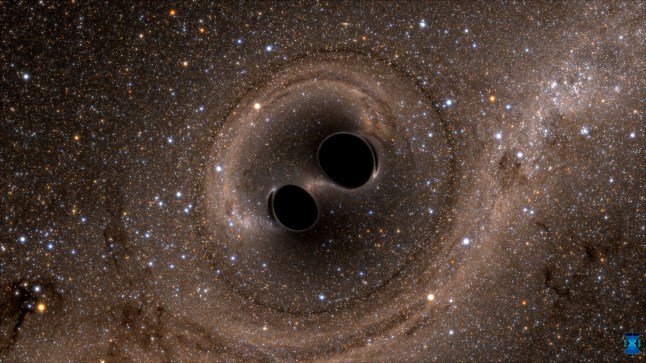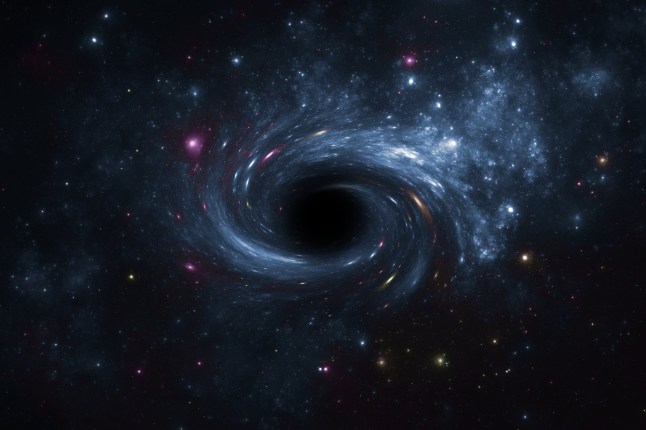 2025-07-15
HaiPress
2025-07-15
HaiPress
Black holes,gluttonous celestial phenomena,sometimes blend,unleashing heaps of energy (Picture: LIGO Laboratory/Reuters
Imagine you’re playing Hungry Hungry Hippos,the tabletop game where the animals eat as many marbles as they can.
Suddenly,two of these plastic hippos begin dancing around the board and smash into each other,forming one big and still very much hungry hippo.
Scientists have revealed they’ve seen the cosmic equivalent of this – two black holes merging on the outskirts of our galaxy.
So,to clarify,not giant space hippos.
The black holes – one roughly 137 times the mass of the Sun and the other about 103 solar masses – fused into one pit of infinitely deep darkness 225 times the mass of our Sun.
The event,called GW231123,took place possibly billions of years ago,about between two and 13billion light-years away.

Black holes are often found at the centre of galaxies,like this one in M87 (Picture: National Science Foundation/Getty Images)
It’s the largest black hole merger ever recorded by gravitational wave detectors,which pick up tiny vibrations in the fabric of reality.
Black holes are bottomless pits of gravity that are the gravestones of ancient stars that imploded and collapsed.
Sometimes,two black holes begin to orbit one another and merge,wobbling space-time like a bowl of jelly and unleashing gravitational waves.
Two detectors in the US operated by the Laser Interferometer Gravitational-wave Observatory (Ligo) noticed GW231123 in November 2023.
Twitches in space-time thousands of times smaller than the width of a proton and one-tenth of a second long were recorded.
This might not sound like much,but you can’t just drop a pen in front of a gravitational wave detector and get a result – gravity is too weak a force,so this was a serious amount of energy.
 All the black hole smashes discovered so far involve ones far larger than the black holes that astronomers had previously identified as the remnants of dead stars (Picture: Getty Images/iStockphoto)Broadly speaking,astronomers have found black holes in a size small and size large,but never a medium.Black holes with masses below about 60 times that of the Sun – a size small – are created when a star dies. Yet ones between 60 to 130 solar masses have never been seen,with physicists believing that the dead stars that could turn into them explode before fully forming.At least one of the black holes in GW231123 probably falls into this size medium range,‘But for GW231123 there is a simpler explanation,’ Professor Sperhake said,‘one which Occam’s razor would suggest us to prefer.‘GW231123 is a second- or higher-generation merger,that is,the two black holes of this binary system are themselves the merger product of merger events that happened a long time ago.‘This way,the large holes observed now were formed of perfectly respectable black holes below the 60 solar-mass threshold in a sequence of coalescences called hierarchical mergers.’Evidence of collisions involving black holes even larger than GW231123,up to 300 times that of the Sun,has been discovered but not confirmed.For Hannam,it’s hard not to be excited about the findings,however bizarre and confusing they seem.‘The more of these extreme,unexpected signals we see,’ he added,‘the more we learn about how black holes form in the universe,and how the universe evolves.’
All the black hole smashes discovered so far involve ones far larger than the black holes that astronomers had previously identified as the remnants of dead stars (Picture: Getty Images/iStockphoto)Broadly speaking,astronomers have found black holes in a size small and size large,but never a medium.Black holes with masses below about 60 times that of the Sun – a size small – are created when a star dies. Yet ones between 60 to 130 solar masses have never been seen,with physicists believing that the dead stars that could turn into them explode before fully forming.At least one of the black holes in GW231123 probably falls into this size medium range,‘But for GW231123 there is a simpler explanation,’ Professor Sperhake said,‘one which Occam’s razor would suggest us to prefer.‘GW231123 is a second- or higher-generation merger,that is,the two black holes of this binary system are themselves the merger product of merger events that happened a long time ago.‘This way,the large holes observed now were formed of perfectly respectable black holes below the 60 solar-mass threshold in a sequence of coalescences called hierarchical mergers.’Evidence of collisions involving black holes even larger than GW231123,up to 300 times that of the Sun,has been discovered but not confirmed.For Hannam,it’s hard not to be excited about the findings,however bizarre and confusing they seem.‘The more of these extreme,unexpected signals we see,’ he added,‘the more we learn about how black holes form in the universe,and how the universe evolves.’